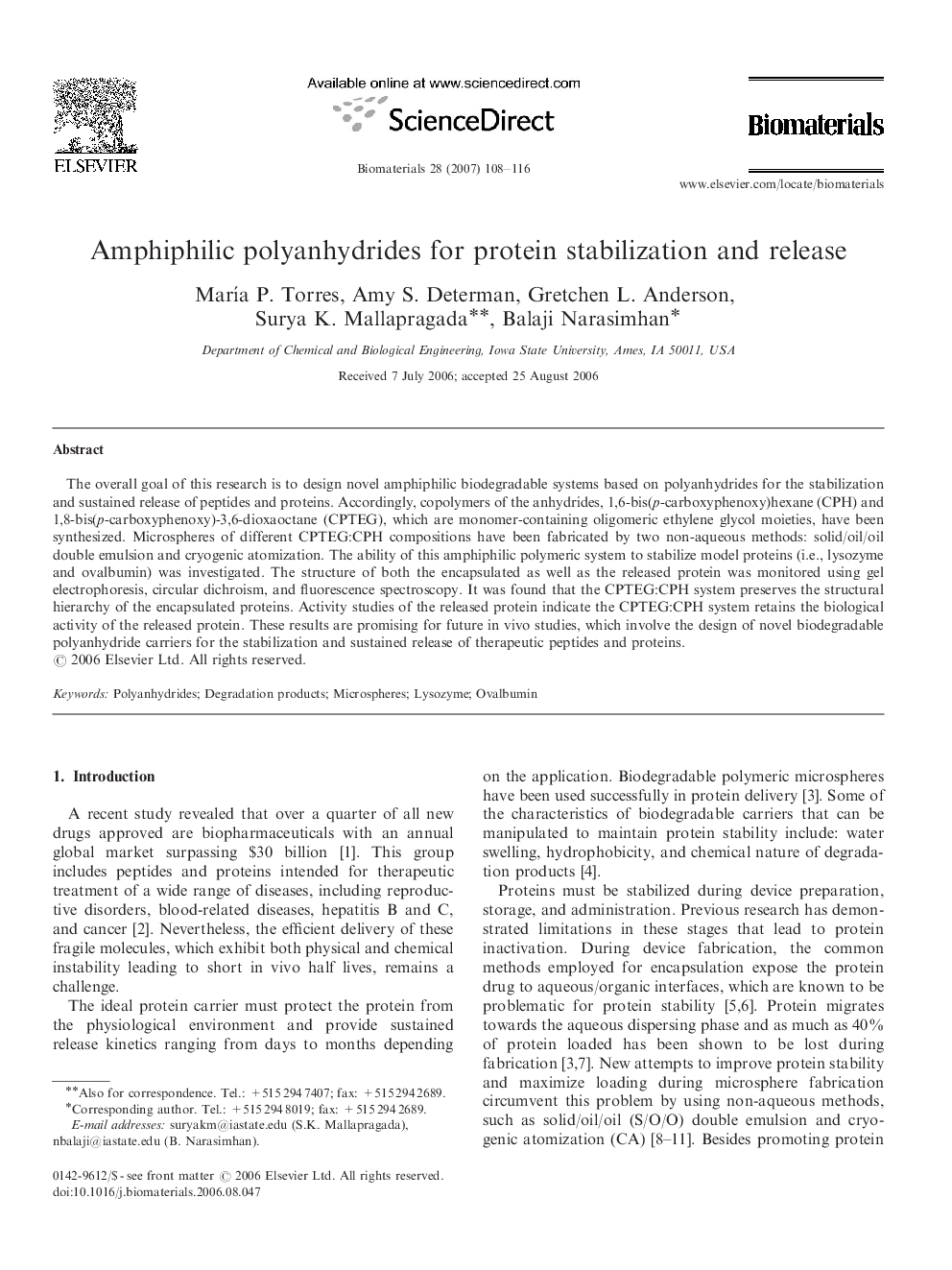| Article ID | Journal | Published Year | Pages | File Type |
|---|---|---|---|---|
| 11135 | Biomaterials | 2007 | 9 Pages |
The overall goal of this research is to design novel amphiphilic biodegradable systems based on polyanhydrides for the stabilization and sustained release of peptides and proteins. Accordingly, copolymers of the anhydrides, 1,6-bis(p-carboxyphenoxy)hexane (CPH) and 1,8-bis(p-carboxyphenoxy)-3,6-dioxaoctane (CPTEG), which are monomer-containing oligomeric ethylene glycol moieties, have been synthesized. Microspheres of different CPTEG:CPH compositions have been fabricated by two non-aqueous methods: solid/oil/oil double emulsion and cryogenic atomization. The ability of this amphiphilic polymeric system to stabilize model proteins (i.e., lysozyme and ovalbumin) was investigated. The structure of both the encapsulated as well as the released protein was monitored using gel electrophoresis, circular dichroism, and fluorescence spectroscopy. It was found that the CPTEG:CPH system preserves the structural hierarchy of the encapsulated proteins. Activity studies of the released protein indicate the CPTEG:CPH system retains the biological activity of the released protein. These results are promising for future in vivo studies, which involve the design of novel biodegradable polyanhydride carriers for the stabilization and sustained release of therapeutic peptides and proteins.
